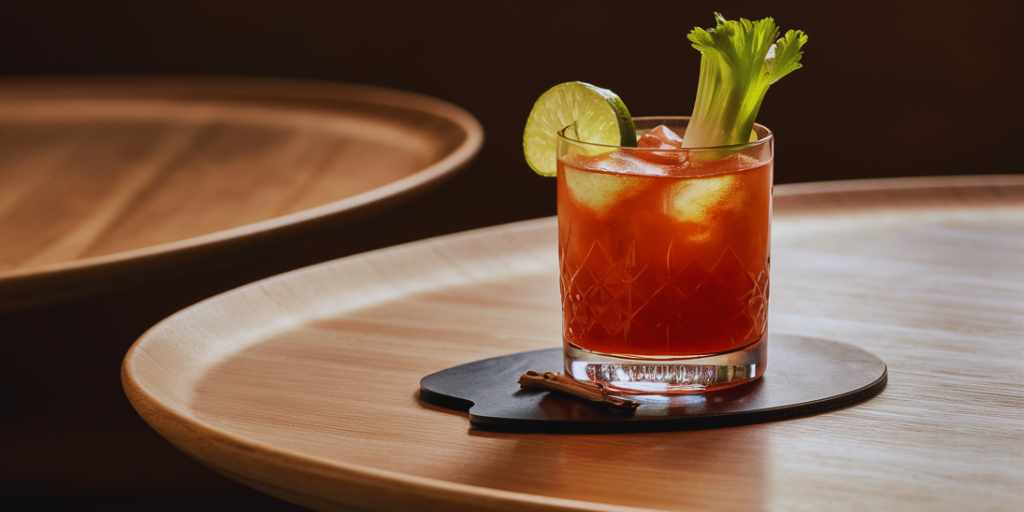In the world of cocktails, bitters are often the unsung heroes, subtly enhancing the flavours of your favourite drinks. This article will delve deep into understanding bitters – what they are, how they’re used, how much to use, and the best ways to store them. Let’s uncover the mystery behind these flavour powerhouses.
Key Takeaways
- Bitters are a vital ingredient in many cocktails, and even a small quantity can significantly enhance the flavour of your drinks.
- While most bitters contain alcohol, the amount used in a cocktail is minimal, and many bitters can be purchased without age restrictions.
- There are numerous types of bitters, each with its unique flavour profile. Experimenting with different types can truly elevate your mixology skills.
- Bitters have a long shelf life and do not typically need refrigeration. However, they should be stored in a cool, dark place to maintain flavour.
How to Use Bitters: From a Dash to a Sip
How Much Bitters to Use
The question of ‘how much bitters to use’ is often asked by cocktail enthusiasts; the answer usually is – it depends. The general rule of thumb is to start with a dash or two and adjust according to taste.
How to Drink Bitters: Be Bold, Sip Different
While bitters are typically used in small amounts, you can enjoy them in larger quantities for a bold, unique taste experience. Some people even enjoy neat bitters on the rocks as a digestif after a meal.
How To Use Bitters in Cocktails?
Using bitters in cocktails is quite simple and can significantly enhance the flavour profile of your drink. Here’s a general guide on how to use them:
- Choose Your Bitters: The first step is to decide which type of bitters you’d like to use. There are many varieties available, each with its unique flavour profile. For example, Angostura bitters provide a warm, spicy flavour, while orange bitters add a bright citrus note.
- Add Sparingly: Bitters are potent, and a little goes a long way. Typically, a cocktail recipe will call for just a few dashes of bitters. A “dash” is a small splash, roughly equivalent to 1/8th of a teaspoon, though this can vary based on the bottle and the bitters’ viscosity.
- Experiment: One of the great things about bitters is their ability to add a complex layer of flavour to a cocktail. Don’t be afraid to experiment with different types and amounts of bitters to find what you like best.
- Mix: After adding the bitters, mix or shake your cocktail as directed by the recipe. This will help to fully incorporate the bitters and evenly distribute their flavour throughout the drink.
Unveiling Bitters: What They Are and What They Are Used For
What Are Bitters?
The term ‘bitters’ might seem confusing initially, but it simply refers to a liquid extraction of seeds, herbs, bark, roots, flowers, leaves, and fruits. These extracts are then mixed with a high-proof alcohol base to create a potent flavouring agent. They’re vital in many cocktails; even a drop or two can transform a drink.
What Are Bitters Used For?
Bitters can transform a good cocktail into a great one, but their uses extend far beyond mixology. They’re also a staple in culinary applications, used to heighten the flavour of food, and even have a history in medicine due to their digestive properties.
The Composition of Bitters: Alcohol and More
Do Bitters Have Alcohol?
Yes, most bitters contain alcohol, but the concentration varies significantly among different types. Some can contain as much as 45% alcohol, while others have considerably less. However, considering the small quantity used, the actual alcohol content in your drink remains minimal.
What’s in Bitters Apart from Alcohol?
Bitters are more than just alcohol – they are a complex blend of botanicals, each contributing to their unique flavour profile. Ingredients can range from commonplace items like orange peel and cinnamon to more exotic elements like wormwood or gentian root.
Understanding Types of Bitters
Different Types of Bitters
From Angostura to Peychaud’s to orange bitters, the world of bitters is vast and varied. Each type offers a unique flavour profile, from the warm spiciness of aromatic bitters to the bright citrus notes of orange bitters.
Aromatic Bitters and Their Uses
Like the renowned Angostura bitters, aromatic bitters play a key role in many classic cocktail recipes. Used sparingly, these bitters can add depth and complexity to your drinks, enhancing the other ingredients rather than overpowering them.
Storing Bitters: Shelf Life and Refrigeration
Shelf Life of Bitters: Do Bitters Go Bad?
No, Just like most spirits, bitters don’t technically expire. Regarding the shelf life of bitters, it’s important to note that not all bitters are created equal.
How long do bitters last? Most can last for years if stored properly but always check for any changes in smell or appearance.
Do Bitters Need To Be Refrigerated?
Do Bitters Need To Be Refrigerated? No, while some might think that bitters need to be refrigerated due to their alcohol content, the truth is a bit more nuanced. Most bitters can be stored at room temperature but should be kept in a cool, dark place to preserve their flavour.
Bitters and Health Considerations
Can You Have Bitters When Pregnant?
The question of whether it’s safe to consume bitters during pregnancy is valid, considering the alcohol content in most bitters. While the actual alcohol content consumed is minimal, it’s always best to consult with a healthcare professional if you’re pregnant and unsure.
Do You Have to Be 21 to Buy Bitters?
Given the alcohol content in bitters, you might wonder if there are age restrictions for purchasing them. The answer is interestingly complex. In some areas, bitters are classified as a non-potable product due to their intense flavour; therefore, there are no age restrictions. However, this can vary by location and store policy.
Making Your Own Bitters
What are Bitters Made From, A DIY Guide
Making your own bitters can be a fun and rewarding process, starting with understanding the basic components. Bitters are typically made from a blend of botanicals and a high-proof spirit. By experimenting with different ingredients, you can create a unique blend that is perfect for your palate.
Making your own bitters can be an exciting and rewarding endeavour. It allows you to create a flavour profile that’s uniquely your own. Here’s what you need to know about the process and what bitters are made from:
Ingredients, what’s in bitters?
Bitters are primarily made up of three components:
- Botanicals: These are the ingredients that give bitters their distinctive flavour. This category includes roots, bark, fruits, herbs, and spices. Some common botanicals used in bitters include cassia, gentian, cinchona bark, and orange peel.
- Base Spirit: The botanicals are infused into a high-proof spirit, usually over 50% ABV, to extract their flavours. The spirit is often neutral, but you can use something with its flavour (like whiskey or rum) for added complexity.
- Water and Sweetener: After the infusion period, the mixture is often diluted with water to bring it down to a manageable proof, and a sweetener like sugar or honey is added to balance the bitterness.
The Process
- Choosing Your Botanicals: Decide on the flavour profile you want for your bitters. Do you want them to be citrusy, spicy, floral, or something else? Select your botanicals based on this.
- Infusing: Place your botanicals in a jar and cover them with your chosen spirit. Seal the jar and let it sit in a cool, dark place for about two to three weeks. You’ll want to shake the jar every few days to help the flavours meld together.
- Straining: After infusion, strain the mixture through a fine mesh sieve or cheesecloth to remove the solids.
- Adding Water and Sweetener: Dilute the mixture with water and add your chosen sweetener. This is also a good time to taste your bitters and adjust the flavour if necessary.
- Bottling: Once you’re happy with the flavour, bottle your bitters in a container with a dropper or dasher top for easy use.
Substitute for Bitters: Creativity in Cocktails
While there’s nothing quite like the unique flavour complexity of bitters, there are a few substitutes you can use in a pinch if you don’t have bitters on hand:
- Citrus Peel: A twist of lemon or orange peel can provide a burst of bright, aromatic flavour that can somewhat mimic the effect of bitters in a cocktail.
- Non-Alcoholic Bitters: A few non-alcoholic bitters on the market can be used as a direct substitute for alcoholic bitters.
- Tonic Water: Tonic water contains quinine, a common ingredient in many bitters. A splash of tonic can add a bitter note to a cocktail.
- Lemon or Lime Juice: While they won’t provide the same complex flavour as bitters, a bit of citrus juice can help to balance out a too-sweet cocktail.
- Fortified Wines or Aperitifs: Vermouth, Campari, or other bitter aperitifs can sometimes be used in place of bitters to add complexity and a bitter note to a cocktail.
- Herbal Teas: Strongly brewed herbal teas can mimic some of the botanical flavours found in bitters.
Remember, these substitutes won’t replicate the exact flavour of bitters, but they can help to provide some balance and complexity in your cocktails.
Wrapping Up: Your Journey with Bitters
Understanding bitters can elevate your mixology skills, whether you are a cocktail enthusiast or a curious newcomer. Here’s a toast to these small but mighty flavour boosters! Remember, the world of bitters is as expansive as it is flavorful, and there’s always more to explore.
For more information on bitters, see our article on everything you need to know about bitters.
Frequently Asked Questions
Do Angostura bitters go bad?
No, Angostura bitters do not go bad if stored properly. They have a long shelf life and can last for years.
Do bitters need to be refrigerated?
Most bitters need not be refrigerated and can be stored at room temperature.
How much alcohol is in bitters?
Technically, bitters contain alcohol, usually ranging from 35% to 45% ABV (Alcohol By Volume). However, due to their potent flavour and the small size of the bottles they’re sold in, most recipes only call for a dash or a few drops.
Can I have lemon lime bitters when I am pregnant?
Pregnant women should avoid alcohol, even though bitters, used in small quantities, contain little alcohol. Some studies suggest women should even avoid quinine-containing beverages like tonic water during pregnancy. (source)
How many drops are in a dash of bitters?
A dash of bitters is typically considered to be about 6-8 drops, but this can vary based on the dash’s size and the bitters’ viscosity.
How Many Dashes in a Bottle of Bitters?
The number of dashes in a bottle of bitters can vary depending on the bottle’s size and the dasher top’s design, which can affect the volume of a “dash”. However, as a general estimate, a standard 5-ounce (148 ml) bottle of bitters contains approximately 600-800 dashes. This is an approximation, and the actual number may vary.
What are aromatic bitters used for?
Aromatic bitters are used in many classic cocktail recipes to add depth and complexity. They can also be used in cooking to enhance the flavour of certain dishes.
Remember, bitters are an ingredient meant to enhance a cocktail’s other flavours, not overpowering them. Start with a small amount and add more if needed. Happy mixing!




